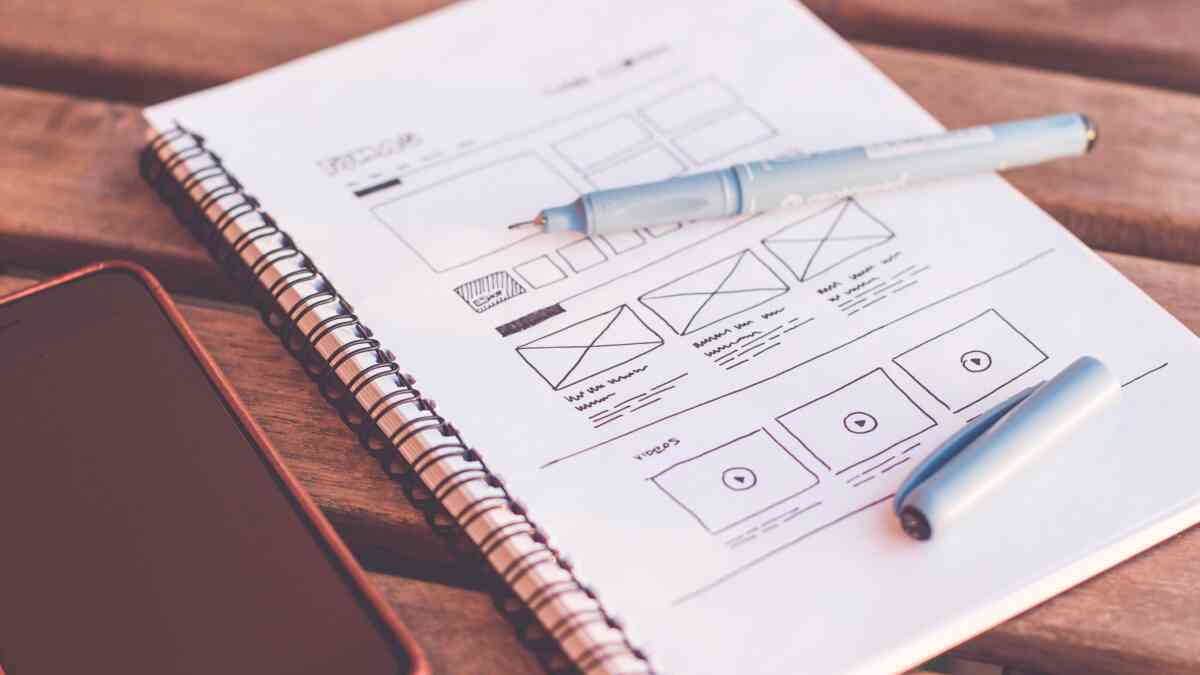
The Four Key Steps to Planning a Successful Website Redesign
Proper planning before you redesign your website will ensure your project goes smoothly and that you end up with a better result.
Redesigning a website can be daunting, especially if your current site is outdated visually or doesn't accurately reflect your business goals and offerings.
While it's tempting to cannonball into the design phase—because let's be honest, that's the most fun—your project will run much more smoothly, you’ll conserve valuable marketing budget, you’ll have a live website more quickly, and you will save your project team a lot of headaches if you slow down and plan out the site beforehand.
Also, planning before you jump into designing will help you ensure you don’t create a website that you think is beautiful, but that doesn’t consider your site’s user. A well-designed website considers what information the user needs from a website and at what time and stage in a user journey.
Here’s how to plan for a successful website redesign for your business:
1. Create a Wish List
At this stage in the website redesign process, the sky is the limit. Dream big.
Create a list of things you want your website to include and functions you’d like it to have. The list can include items as simple as “our services,” directions,” and “the ability to add articles and videos easily.”
The list should also include down-the-line, bigger picture thoughts, including whether you’d like to add e-commerce functionality in a year or two.
Part of the wish-list building process should involve thinking through processes you currently undertake manually or in a less-than-ideal way that your website could automate.
For example, how can you integrate the website with your other software to save your team time and money? Can you build website pages or workflows that reduce your sales team’s time or reduce friction in the buying process? Can your forms auto-populate your CRM? Can you automate e-mail newsletter signups? (Read FrogDog’s white paper on e-mail marketing technology for more detail on e-mail marketing and marketing automation.) Can you answer certain common sales questions automatically via website features and functions?
Ultimately, what you can integrate and incorporate into your website will depend on the software you’ll use to build it. Knowing what you would like to automate may help influence the software you choose, too.
Sign Up For Our Newsletter
Get marketing tips and articles delivered right to your inbox.
2. Develop a Sitemap
Next, create your website’s sitemap. A sitemap is a complete list of pages that your website will include.
Knowing what pages your site will include and how these pages relate to other pages will help the website team understand the scope of the project, any gaps in content, and how the site will be structured.
Note: Do not confuse this step in the website redesign planning process with the sitemap that Google Analytics and other search engines scan when developing search results—also known as the SEO sitemap.
You can create your sitemap in any list-style format. We recommend using a spreadsheet format, as this will help you easily add information to associated rows and columns as the project proceeds.
Sitemap Structuring: Group Your Pages into Sections
In your sitemap, ensure that pages with a similar format and purpose have a similar format.
For example, each of your services will have its own page, and each of these pages will have a similar goal (to present each service). Case studies will each have their own pages as well, which will have their own layout and a similar goal.
A simple website section’s sitemap should look like this:
- Services
- Subservice
- Subservice
Grouping your pages into sections will make for a better user experience and will help search engines quickly sort through your site. Showing how these groupings will work in your sitemap will help the team building your website better understand your vision, too.
Sitemap Structuring: Consider Each Section’s Purpose
Once you know which pages are going to be included on the site, you need to think about the purpose of each section.
What action do you want the user to take on any given page of your site? Does it make sense to cross-relate any other products, services, or staff members?
For example, a law firm website might include a list of attorneys who specialize in a specific service area on a page that explains this area of their practice. These pages could link back to one other, in that each attorney’s biography page can then link to the overview page for the attorney’s practice area.
Ensure you reflect these actions and internal links in your sitemap. Clarifying the purpose of each section will make it very clear how to approach the site’s content when you get to the design stage.
3. Determine What Site Content to Refresh or Create
At this point in the process, you will have a clear list of pages that your site needs and will have outlined each page’s section and purpose. Review your sitemap to see what content you have on your current site or elsewhere in your marketing materials and what content you need to create. For content that you have already created, you should review it to ensure that it’s up to date.
Using these insights, create a list of content you need to create, a list of content you need to update, and a list of content you have that you can use immediately (including its location). If you have a considerable amount of material that you need to have written, photographed, or filmed, you should consider hiring help from an experienced marketing content creation team.
The number one reason a website project stalls? Missing content. Tackling the content question ahead of reaching the design stage will keep your project on schedule.
4. Create Your Website’s Design
Once you have the nuts and bolts in place, the design for your website will feel much more straightforward.
You have already determined what is going to go into the website, the purpose of each section, any holes in your content, and how the site can integrate with your other business software.
The design phase is now just a matter of ensuring the site visually reflects your company’s brand.
A well-designed website considers what information the user needs from a website and at what time and stage in a user journey.
Don’t Go into Website Planning Alone!
These steps might seem tedious, but they will save your team time on the back end and will help to make sure that your website redesign project moves along smoothly.
Need help? Most people do! Contact FrogDog today to learn how we can help you to better manage your website design.
Photo Credit: Picjumbo.comUpdated: Oct 01, 2021

We do not spam. And you can unsubscribe when you want.

